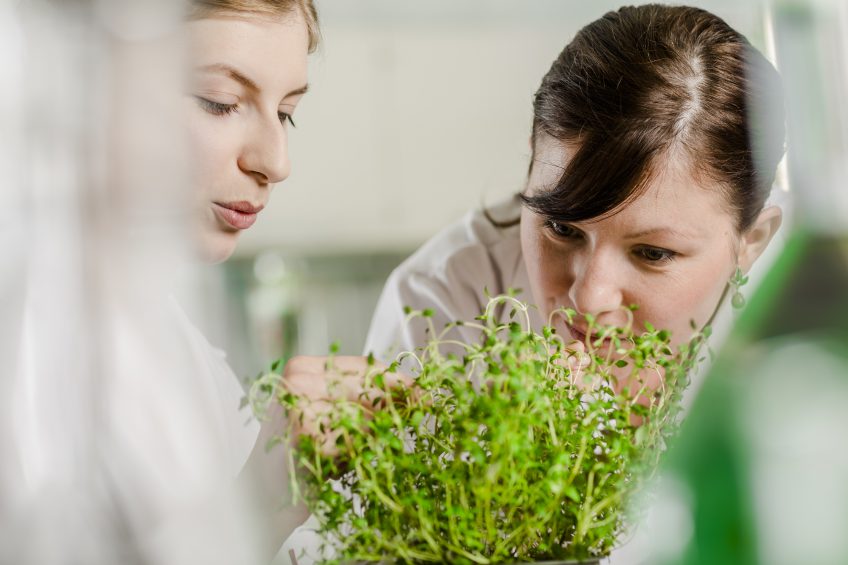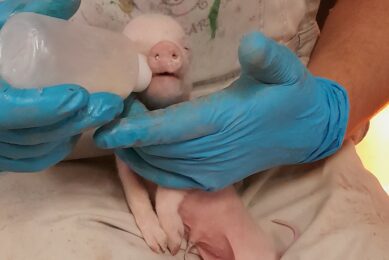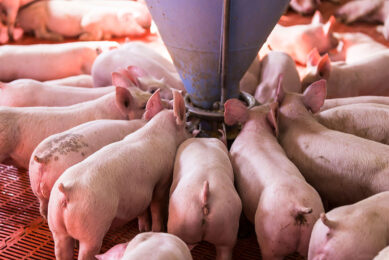Trust in the power of nature

With the withdrawal of antibiotic growth promoters (AGPs), a combination of phytogenics and short and medium chain fatty acids can contribute as a safe and natural performance enhancement in AGP-free animal production.
Although not fully understood, it is clear that the mode of action of AGPs supersede the sole reduction of microbial metabolic activity in the gastrointestinal tract of target animals, avoiding sub-clinical infections and diminishing the competition for nutrients. The reduced exposure to harmful bacteria or their toxic and growth depressing metabolic products is paralleled by anatomical changes in the gut. Hence, the use of antibiotics is related to a thinner gut wall and improved villi development, both resulting in enhanced nutrient digestibility and gut barrier function. Also anti-inflammatory effects of AGPs supported these effects and reduce metabolic costs of the immune system.
Nevertheless, besides these benefits arising from AGP use, severe negative consequences come along with a widespread and non-specific intake of antimicrobial drugs. In the 1950s – only a few years after the discovery of growth promoting effects of antibiotics – first reports on resistances in food animals came up. Today, antimicrobial resistance has reduced the efficacy of antibacterial drugs with negative impacts not only for industrial agriculture, but also for human medicine.
Moving away from AGPs
By focusing on the effects on productivity in a fast growing livestock sector, the management of long-term consequences on animal and human health in view of in-feed antibiotics was underestimated for years. Over the last decades, consumer demand for safe products to appear in the food-chain gained attention, and more and more countries banned the use of antibiotics for sub-therapeutic use. In 2006, the European Union initiated the ban on the use of growth promoting in-feed antibiotics in animal production for reasons of antimicrobial resistance. Currently, this prohibition is gradually spreading to other countries worldwide, with the USA restricting the use of AGPs in 2017. Today, however, there is no adequate solution to counteract fully the production losses arising when omitting in-feed antibiotics. For example, in Denmark, where the use of AGPs was banned in finishing pigs in 1998, the costs for pig production increased by roughly 1%. Moreover, WHO concluded in 2002, that there was no obvious effect of the AGP ban on pig meat prices in Denmark in the years after the ban of in-feed antibiotics.
It is likely that countries, which have modern production systems applying good hygiene, biosecurity and management practices would also see limited productivity and economic effect of phasing out AGPs. However, countries with less optimised production systems could observe larger productivity effects and as a consequence larger economic effects. The negative consequences on a production level are present in an increased feed conversion ratio of about 1% and a strongly reduced weight gain of -2.7% in broilers and from -2.6% (weaners) to -6% (finishers) in pigs. Addressing the question of how to replace AGPs, the most promising approach is rather to combine different strategies than solely trusting to find one ‘silver bullet’. With this in mind all improvements in animal management and the highest hygiene standards should be established. This represents the basics to optimise further a farm’s profitability with the help of in-feed performance enhancers.
The natural and safe path
Research on alternatives, like phytogenic feed additives, has become prevalent to develop alternatives to in-feed antibiotics, as demanded by consumers and by legislation. When it comes to antibiotic-free animal production, nutritionists, veterinarians and animal producers use organic acids, enzymes, pre- and probiotics and phytogenic feed additives, in order to support the intestinal health of the animal. The wide range of modes of action of different phytogenic actives can optimise nutrient digestibility and support the intestinal health.
Phytogenics are characterised by their plant-derived origin, being natural and proven to be safe. Since Delacon’s phytogenic feed additives consist mainly of essential oils, bitter and pungent substances, saponins, flavonoids, mucilages and tannins, it is evident that they are not only for sensorial stimulation but are also stimulating various physiological processes: Phytogenics are potent to improve nutrient utilisation, stimulate enzymatic activity and even show anti-oxidant and anti-inflammatory effects.
Although, phytogenics and especially essential oils have demonstrated having direct antibacterial effects, high concentrations are needed to guarantee such effects and are less attractive for economic and/or sensorial reasons. Nevertheless, small amounts of various plant-derived essential oils effectively reduce the production of virulence factors by bacteria, so-called Quorum Sensing, resulting in reduced toxin production, adhesion factors, and biofilm formation.
Combination of phytogenics and fatty acids
An alternative approach to support the intestinal health of farm animals may be found by combining the beneficial effects of phytogenic feed additives with the anti-bacterial effects of esterified short and medium chain fatty acids. In a US trial, this combination has been shown to improve the efficacy of poultry performance, even under challenging conditions involving necrotic enteritis. Results, in Figure 1, show that, by increasing the application time of the combination (followed by feeding the phytogenic feed additive alone), the feed conversion ratio (FCR) and body weight (BW) on day 49 were improved. In terms of performance, feeding the combination of the phytogenic feed additive and esterified short and medium chain fatty acids for 28 days was as effective as the application of 20 ppm Virginiamycin in the positive control group. This combination also tended to reduce the incidence of necrotic enteritis lesions by 40%, compared with the negative control group, making it similar to the positive control group.
The wide spectrum of modes of actions of phytogenic feed additives based on plant extracts, show the synergistic effects of many different bio-actives, which have not been reduced to the effects of a single lead substance. Hence, an elaborated blend of different phytogenic components results in highly powerful natural feed additives, which are a cornerstone in solutions to compensate for the effects of withdrawing antibiotic growth promoters from animal feed.
References upon request
 Beheer
Beheer





 WP Admin
WP Admin  Bewerk bericht
Bewerk bericht